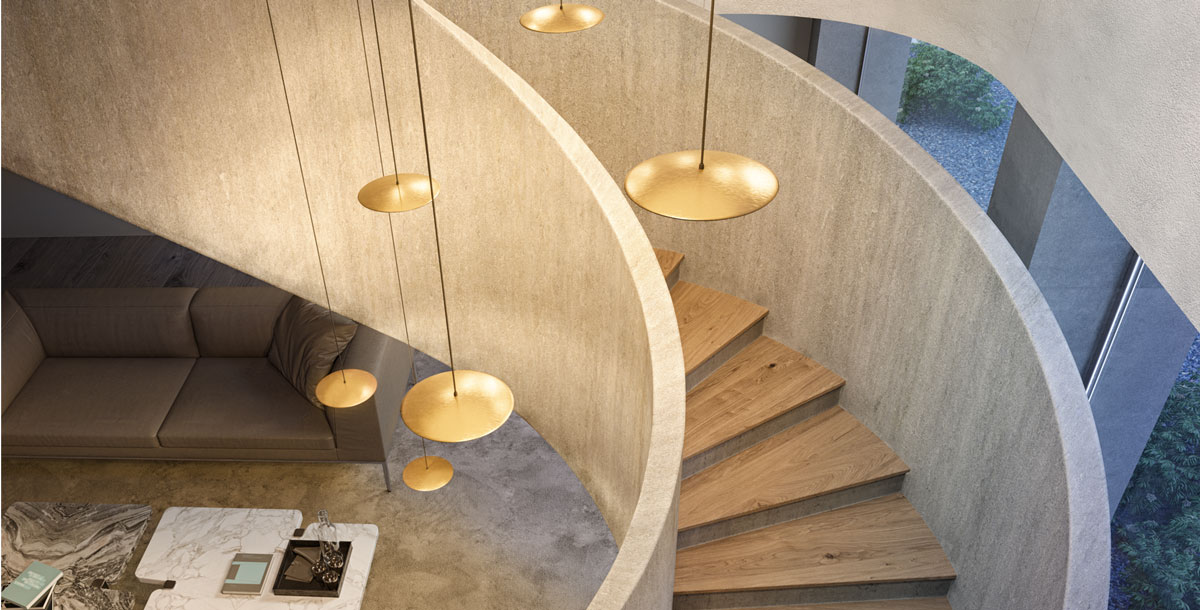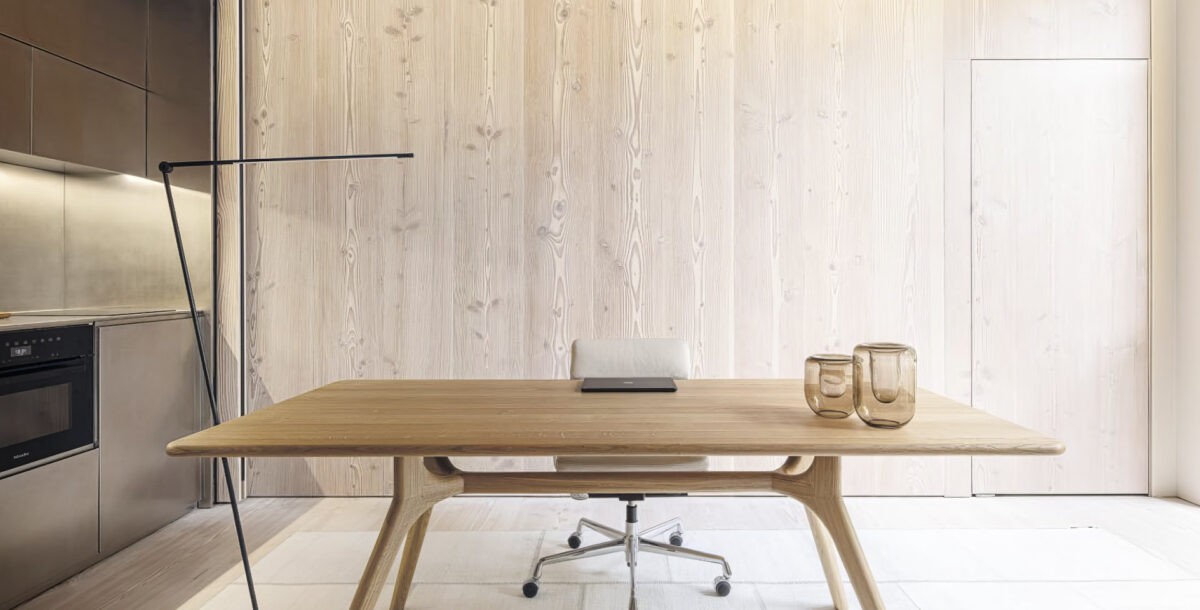Pendant lighting: a buyer’s guide
Make the right statement with a fabulous fitting by following this expert advice.
Ideally, a ceiling pendant will do far more than simply provide background lighting. It can enhance a space by complementing a decorating scheme, create a standout feature or draw attention to a particular area. Some pendant lighting hangs solo, while smaller styles look great in a group, line or cluster. Several factors will influence which design you select, such as the fitting’s dimensions, its length and brightness.
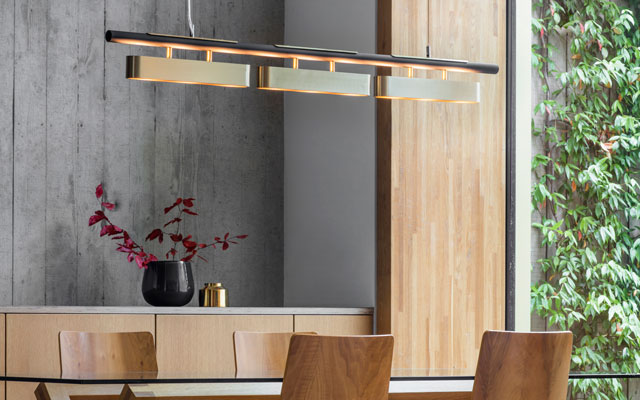
Brass and opal glass linear pendant from Bert Frank
Height and drop
To ensure there is no risk of anyone bumping their head on a ceiling light, there should be at least 2.2 metres between the floor and the bottom of the fitting. So, it is important to know the light’s total length and whether it will adjust sufficiently to allow for adequate clearance.With high ceilings, such as a double-height hall, the light must be of a size and length to work with the proportions of the space. Suspend it so that the fitting can be seen to its best advantage. If it is to hang above a table or island, the bottom of a pendant should be 75-90 centimetres from the surface. Fixed any higher and you’ll be able to see inside the fitting, so choose a design with a decorative interior. A linear fitting, with several lights on an elongated bar, gives a good distribution of light above a rectangular dining table or island unit.
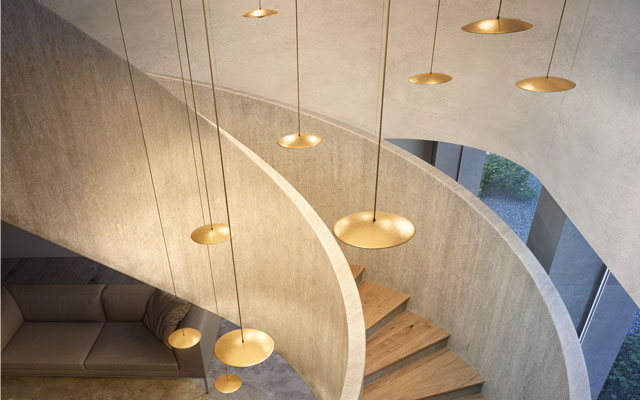
Brushed brass Ginger 32 suspension pendant lights from Chaplins
Is it bright enough?
Allow for around 250 lumens, or 25 watts, of light in total for every square metre of space. So, if your room measures six metres by four metres, you’ll need 6,000 lumens. It’s a good idea to use different types of fittings to reach this level overall. This way you can control the light where and when you need it. A ceiling pendant works well in conjunction with wall lights and table lamps. Bar fittings, multi-light clusters and chandeliers, with anything from two to 30 or more individual lights, tend to have a greater output than single pendants and can reach 10,000 lumens, or 1,000 watts, or more. For greater control of the light level, look for fittings that work via a dimmer.
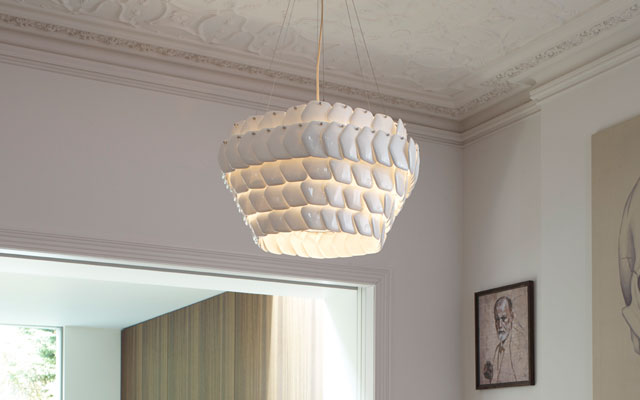
Hexagonal ceiling pendant with overlapping ceramic discs, from Original BTC
All in proportion
It’s important to select a design that’s the right size for your room. Too big and it will dominate the space, too small and it will look lost. ‘A solution is to add the room dimensions together in feet and convert the results into inches,’ says Chris Jordan, managing director at Christopher Wray. ‘This will equal the diameter of the fixture you need.’ A feature ceiling light can be a useful way to give a big room or hallway a point of interest. In an open-plan space think about sight lines and views from elsewhere in the room and hang pendants so they look striking from any angle. In a double-height hall consider how the fitting will appear from an overhead viewpoint, such as the landing.
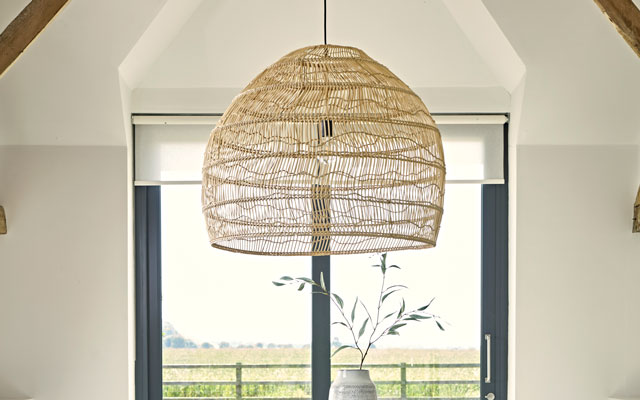
This oversized wicker pendant, from Cox & Cox is in proportion to the height of the ceiling.
Installation tips
Darren Staniforth, senior group technical presenter at the National Inspection Council for Electrical Installation Contracting (NICEIC), explains how to get your pendant lighting properly fitted.
- All installations should be completed by a contractor with an organisation such as NICEIC. To find an electrician in your area, visit the NICEIC website.
- Consider electrical loading when changing pendant lighting. Replacing a single fitting with one bulb for a fitting with multiple bulbs can overload a lighting circuit. So, swap like-for-like.
- Bespoke fittings are often heavier than standard fittings. Check if you need additional supports above the ceiling. Screwing into plasterboard might not be stable enough.
- Isolate the electricity supply at its source, the fuse board/box, before attempting installation or maintenance. Turning off at the light switch is not safe enough. Check at the light fitting to make sure the correct circuit has been isolated.
- You’ll need to be aware of electrical safety regulations when choosing a fitting for cloakrooms, wet rooms and bathrooms. At one end of the scale, in bathrooms with sufficient ceiling height, a standard pendant will suffice but you’ll still need to ensure the material it’s made of can withstand changes in humidity. But if a fitting is going to be close to a water source, a design with an ingress protection rating of IP44 will be needed. The IP rating denotes a fitting’s resistance to water. If you are in any doubt about the suitability of a design for the area you want to use it in, take advice from a qualified electrician or your supplier.

